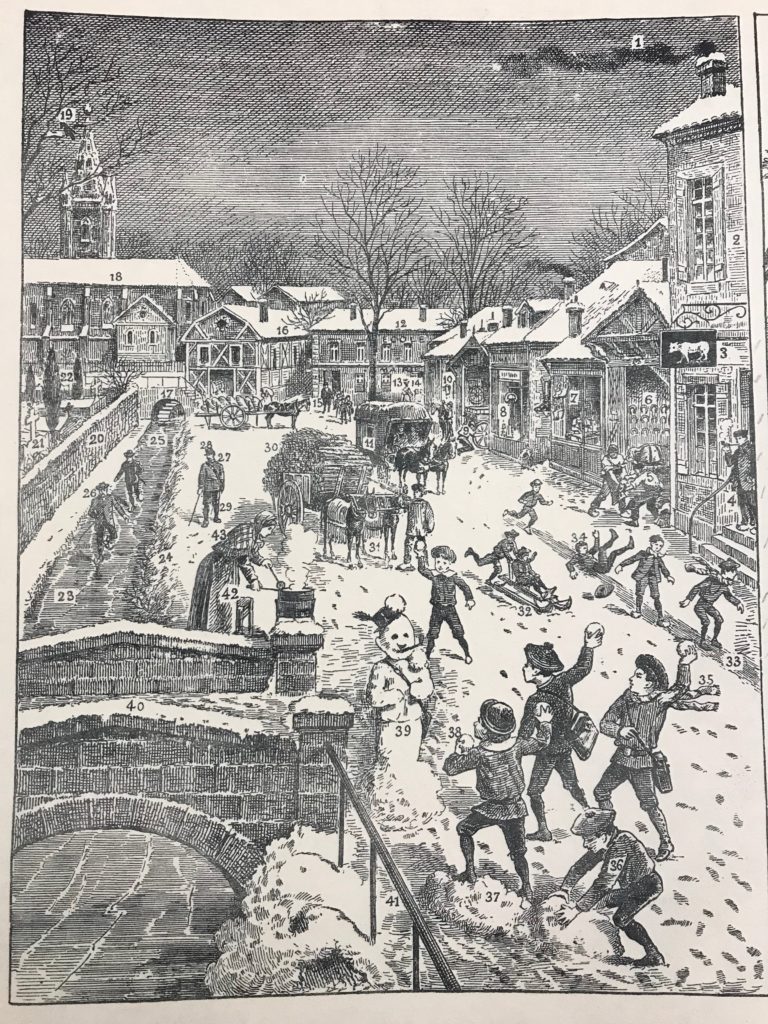
This week’s Charlotte Mason podcast episode is all about our children’s involvement with books. We have interviewed the children to hear their first hand reasons for why they like the books they like. Enjoy listening and getting ready for a new school year.
Listen Now:
“In literature, we have definite ends in view, both for our own children and for the world through them. We wish the children to grow up to find joy and refreshment in the taste, the flavour of a book. We do not mean by a book any printed matter in a binding, but a work possessing certain literary qualities able to bring that sensible delight to the reader which belongs to a literary word fitly spoken. It is a sad fact that we are losing our joy in literary form. We are in such haste to be instructed by facts or titillated by theories, that we have no leisure to linger over the mere putting of a thought. But this is our error, for words are mighty both to delight and to inspire. If we were not as blind as bats, we should long ago have discovered a truth very fully indicated in the Bible––that that which is once said with perfect fitness can never be said again, and becomes ever thereafter a living power in the world. But in literature, as in art, we require more than mere form. Great ideas are brooding over the chaos of our thought; and it is he who shall say the thing we are all dumbly thinking, who shall be to us as a teacher sent from God.” (2/262-63)
“The most common and the monstrous defect in the education of the day is that children fail to acquire the habit of reading. Knowledge is conveyed to them by lessons and talk, but the studious habit of using books as a means of interest and delight is not acquired. This habit should be begun early; so soon as the child can read at all, he should read for himself, and to himself, history, legends, fairy tales, and other suitable matter. He should be trained from the first to think that one reading of any lesson is enough to enable him to narrate what he has read, and will thus get the habit of slow, careful reading, intelligent even when it is silent, because he reads with an eye to the full meaning of every clause.” (1/227)
“A child has not begun his education until he has acquired the habit of reading to himself, with interest and pleasure, books fully on a level with his intelligence. I am speaking now of his lesson-books, which are all too apt to be written in a style of insufferable twaddle, probably because they are written by persons who have never chanced to meet a child. All who know children know that they do not talk twaddle and do not like it, and prefer that which appeals to their understanding. Their lesson-books should offer matter for their reading, whether aloud or to themselves; therefore they should be written with literary power. As for the matter of these books, let us remember that children can take in ideas and principles, whether the latter be moral or mechanical, as quickly and clearly as we do ourselves (perhaps more so); but detailed processes, lists and summaries, blunt the edge of a child’s delicate mind. Therefore, the selection of their first lesson-books is a matter of grave importance, because it rests with these to give children the idea that knowledge is supremely attractive and that reading is delightful. Once the habit of reading his lesson-book with delight is set up in a child, his education is––not completed, but––ensured; he will go on for himself in spite of the obstructions which school too commonly throws in his way.” (1/229)
“ …of all the joyous motives of school life, the love of knowledge is the only abiding one; the only one which determines the scale, so to speak, upon which the person will hereafter live. My contention is, to repeat what has been said, that all children have a capacity for and a latent love of knowledge; and, that knowledge concerning persons and States can best be derived from books, and should be got by the children out of their own books…thought and power of mind develop upon the books we read, as they do not and cannot upon the lectures we hear; should he indeed be convinced of the truth of what I have advanced, I think he will see that, not an educational reform here and there, but an EDUCATIONAL REVOLUTION is before us to which every one of us is bound to put his hand.” (3/246-47)
“[B]ut is it not on the whole better to take them straight to the fountainhead, where possible? In these early years, while there are no examinations ahead, and the children may yet go leisurely, let them get the spirit of history into them by reading, at least, one old Chronicle written by a man who saw and knew something of what he wrote about, and did not get it at second-hand. These old books are easier and pleasanter reading than most modern works on history, because the writers know little of the ‘dignity of history’; they purl along pleasantly as a forest brook, tell you ‘all about it,’ stir your heart with the story of a great event, amuse you with pageants and shows, make you intimate with the great people, and friendly with the lowly. They are just the right thing for the children whose eager souls want to get at the living people behind the words of the history book, caring nothing at all about progress, or statutes, or about anything but the persons, for whose action history is, to the child’s mind, no more than a convenient stage. A child who has been carried through a single old chronicler in this way has a better foundation for all historical training than if he knew all the dates and names and facts that ever were crammed for examination.” (1/282)
“ We trust much to Good Books––Once more, we know that there is a storehouse of thought wherein we may find all the great ideas that have moved the world. We are above all things anxious to give the child the key to this storehouse. The education of the day, it is said, does not produce reading people. We are determined that the children shall love books, therefore we do not interpose ourselves between the book and the child.” (2/231)
“Once more, we know that there is a storehouse of thought wherein we may find all the great ideas that have moved the world. We are above all things anxious to give the child the key to this storehouse. The education of the day, it is said, does not produce reading people. We are determined that the children shall love books, therefore we do not interpose ourselves between the book and the child.” (2/231)
“One more thing is of vital importance; children must have books, living books; the best are not too good for them; anything less than the best is not good enough; and if it is needful to exercise economy, let go everything that belongs to soft and luxurious living before letting go the duty of supplying the books, and the frequent changes of books, which are necessary for the constant stimulation of the child’s intellectual life.” (2/279)
“They must grow up upon the best. There must never be a period in their lives when they are allowed to read or listen to twaddle or reading-made-easy. There is never a time when they are unequal to worthy thoughts, well put; inspiring tales, well told.” (2/264)
“No one knoweth the things of a man but the spirit of a man which is in him; therefore, there is no education but self-education, and as soon as a young child begins his education he does so as a student. Our business is to give him mind-stuff, and both quality and quantity are essential. Naturally, each of us possesses this mind-stuff only in limited measure, but we know where to procure it; for the best thought the world possesses is stored in books; we must open books to children, the best books; our own concern is abundant provision and orderly serving.” (6/I/26)
Pontiac, Lion in the Forest, Hays
The Land Beyond, Ruth Adams Knight
Spring of the Year, Dallas Lore Sharp
D’Aulaire’s Book of Greek Myths
Story of Winston Churchill, Alida Malkus
Book of the Ancient World, Dorothy Mills
Secrets of the Universe, Fleisher
The Red Fairy Book, Andrew Lang
First Studies of Plant Life, Atkinson
Our Island Story, H.E. Marshall
The First Book of Machines, Buehr










